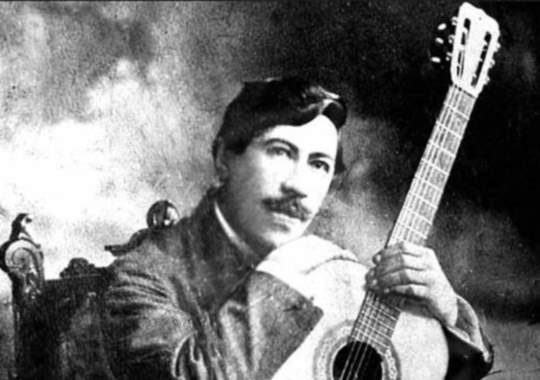Australian-born British classical guitarist John Williams plays Agustín Barrios Mangoré’s Vals Op. 8 No. 4.
Agustín Barrios Mangoré’s Vals Op. 8 No. 4
Agustín Barrios Mangoré’s “Vals Op. 8 No. 4” is one of the Paraguayan composer-guitarist’s most lyrical and technically refined works, showcasing his deep Romantic sensibility and his unique fusion of European classical tradition with South American warmth and rhythm. Written in the early 20th century, it belongs to a set of four waltzes (Op. 8) that highlight Barrios’ mastery of the guitar as both a harmonic and melodic instrument.
The piece is in G major and follows the characteristic triple meter of the waltz, yet its rhythmic flow feels freer and more expressive than a traditional ballroom dance. Barrios fills the texture with lush arpeggios, cascading scales, and rich inner voices, often resembling the piano works of Chopin and Schumann. The main theme sings with a nostalgic, almost vocal quality, while the contrasting middle section introduces a more introspective mood before returning to the radiant opening material.
Technically, the piece demands fluid left-hand shifts and precise control of tone color – hallmarks of Barrios’ virtuosic style. Emotionally, it conveys a sense of longing and elegance that transcends time and geography, making it one of the most beloved works in the classical guitar repertoire.
Agustín Barrios Mangoré
Agustín Pío Barrios (also known as Agustín Barrios Mangoré, May 5, 1885 – August 7, 1944) was a Paraguayan classical guitarist and composer.
Barrios was famed for his phenomenal performances, both live and on gramophone recordings. Although Barrios is usually credited as the first classical guitarist to make recordings in 1909/10, a myth perpetuated by John Williams, the first guitarist to record was the Mexican guitarist Octaviano Yanes performing his “Mexican Dance” (Habanera): the record, Victor 05662, is dated August 25, 1908.

Another version of this piece exists on the Edison Foreign Series cylinder (catalog number 20204). Barrios at times performed in concert in traditional Paraguayan dress (he was partly of Guarani origin), using the pseudonym of Nitsuga Mangoré (‘Nitsuga’ being Agustín spelled backward, and ‘Mangoré’ being the name of a cacique of the South American indigenous group Timbú).
His works were largely late-Romantic in character, despite his having lived well into the twentieth century. Many of them are also adaptations of or are influenced by South American and Central American folk music. Very many of them are of a virtuosic nature.
Sources
- Agustín Barrios on Wikipedia

